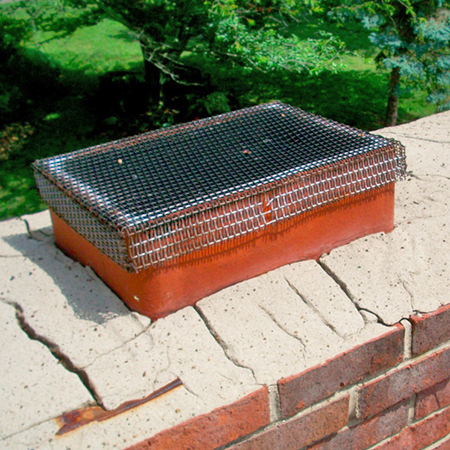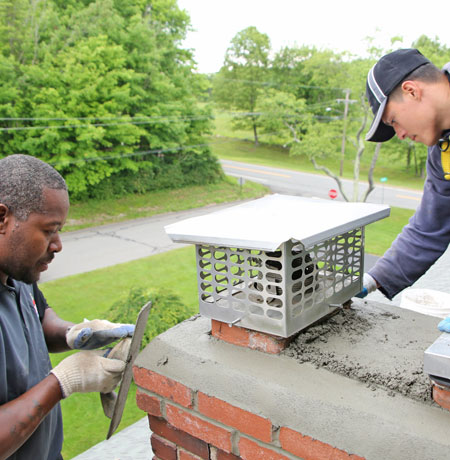What to Do About Chimney Cracks
A well-built chimney in good condition works right without you having to give it a second thought. A chimney that’s showing signs of damage many not keep working right for long. When it comes to cracking in the chimney’s masonry, a lot of homeowners aren’t sure if they should be concerned. Here are some guidelines.
 Chimney cracks let in water
Chimney cracks let in water
As long as the cracks in your chimney are small and not zigzagging throughout the structure, there’s little danger of your chimney collapsing. There is, however, a danger of water infiltration that could lead to enough damage to cause serious problems. When water gets into chimney cracks, it begins a cycle of deterioration. When the air temperature freezes, the water freezes and expands, pushing against the bricks and mortar.
If the resulting damage eventually allows water to access the inside of the chimney, a lot of damage can happen without you even knowing it. For this reason, even minor chimney cracks should be repaired.
The causes of cracks in a chimney
Many things can cause cracks in chimney masonry. Here’s a partial list.
- Earthquakes
- Lightning strikes
- Settling of the house
- Violent hail storms/high winds
- Faulty chimney footing
- Low-quality masonry materials
- Intense hot and cold weather
- Old age
Nothing can be done to prevent the above events and circumstances. But plenty can be done to repair any cracking or other problems they cause.
Spotting & diagnosing chimney crack issues
If you notice signs of cracking in your chimney – or signs of a chimney leak – your first step should be to bring out a certified chimney inspector to look over the structure to gauge the level of damage and determine what caused it.
Signs to look for on your own include:
- Obvious cracks
- Loose bricks
- Patches of crumbled mortar on the roof
- Water in the firebox
- Damp sections on the interior ceiling and walls
- Strong, musty odors coming from the fireplace
- White stains on the exterior of the chimney
Chimney repair strategies
 Minor cracks often can be sealed with a waterproof coating to keep water from getting into the spaces.
Minor cracks often can be sealed with a waterproof coating to keep water from getting into the spaces.
Larger cracking that may be causing loose bricks (spalling) and crumbled mortar often requires a process called tuckpointing, which replaces areas of missing mortar. Some amount of brick replacement may also be recommended. If significant damage is noted during a chimney inspection, you may be advised to have sections of your chimney rebuilt in order to keep it safe and working efficiently.
In cases where chimney cracks have been ignored for years and allowed to progress on their own, you may be looking at a chimney that leans dangerously to one side or, in the worst-case scenario, collapses entirely. A complete chimney rebuild may be necessary.
Important note: Only a professional chimney inspector and a qualified chimney repair technician should be allowed to assess damage to your chimney and initiate repair work.
It’s impossible to use a chimney year after year without it suffering some type of damage. The trick is to get on top of that damage fast and see to the necessary repairs. By doing this, you’ll save big money on extensive and expensive chimney repair projects down the line.
If your chimney is showing signs of cracking, it’s time to call the chimney experts at Northeastern Chimney of West Hartford, CT. We know how to address all chimney crack issues and all other repairs your chimney needs. Schedule an appointment or get your questions answered by calling (860) 233-5770.


